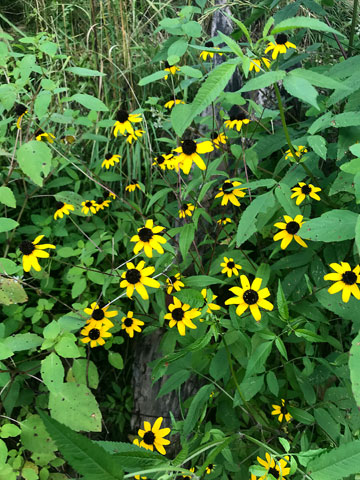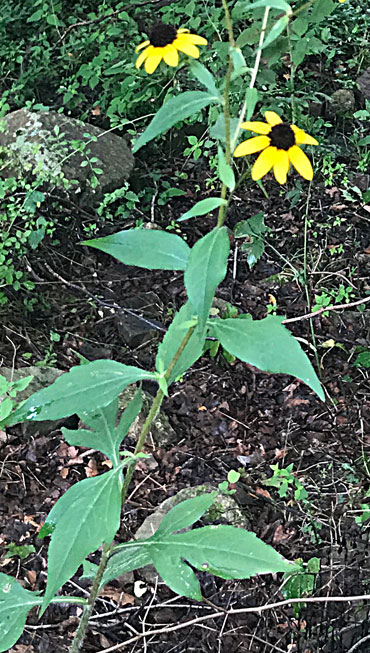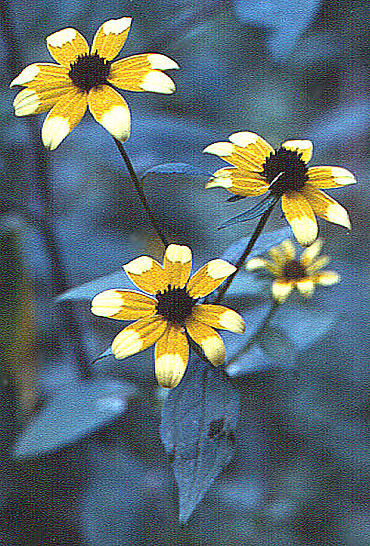 Brown-eyed Susan
Brown-eyed Susan
Rudbeckia triloba
From Illinois
Also known as Three-lobed or Thin-leaved coneflower.
This is a biennial or short-lived perennial plant up to 5' tall. It branches frequently at the leaf axils and its appearance is rather bushy at maturity. The stems are dark red and they have conspicuous white hairs, particularly along the upper half of the plant. The alternate leaves are up to 4" long and 2" across. They are lanceolate to ovate, slightly to coarsely dentate, and rough-textured from minute stiff hairs. Some of the lower leaves are divided into three lobes. Individual upper stems terminate in 1-2 flowerheads. Each flowerhead is about 1½-2" across, consisting of 6-12 ray florets that surround a brown to black flattened cone of numerous disk florets. The petaloid rays of the flowerheads are bright yellow and oblong in shape. The tiny disk florets are narrowly cylindrical. Around the base of each flowerhead, there are inner and outer floral bracts (phyllaries) that are green and ciliate. The flowerheads have little or no scent. 
The blooming period occurs from mid-summer to late summer for about 1-2 months. On robust plants, 6 or more flowerheads are often in bloom at the same time, creating a showy effect. The small achenes are 4-angled and have no tufts of hair. The root system is shallow and fibrous.
